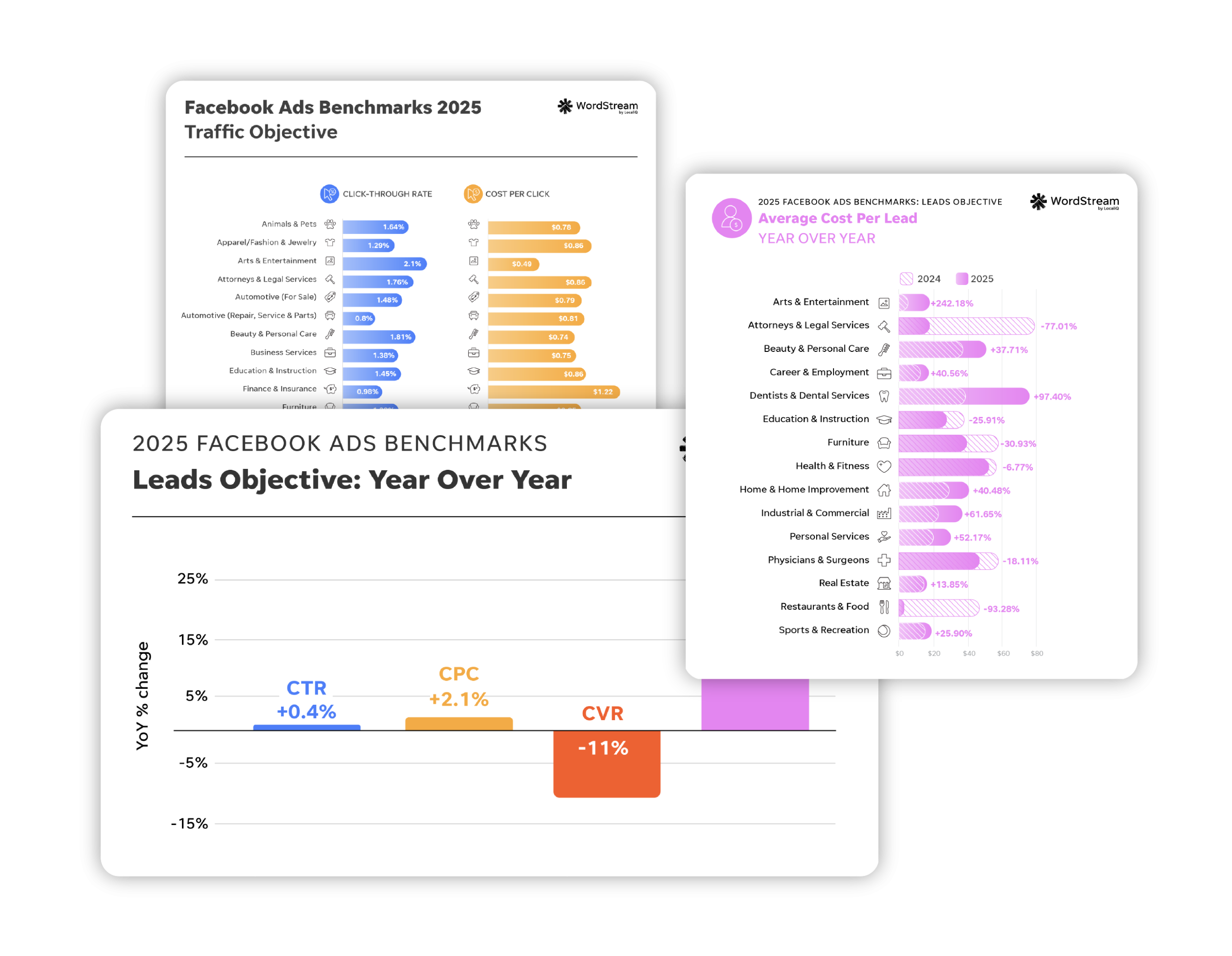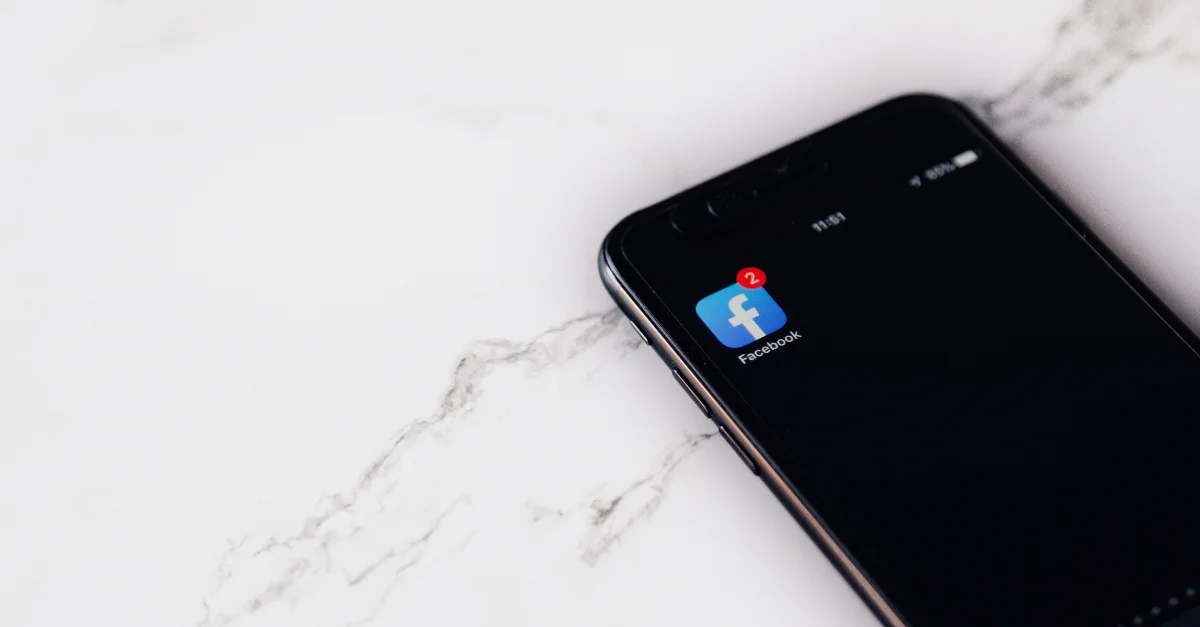As Facebook seeks to deliver the content its users will enjoy most and find most relevant, organic reach has been on the decline. In fact, some say it is downright dead.
This presents a particular challenge for small businesses: You don’t have the same budgets as bigger advertisers to pour into paid posts to compensate.
“The harsh reality of Facebook today is that only about 1 out of 50 people who are already fans of your page will see any single post you make on your Facebook business page,” said Sam Underwood, director of business strategy at digital agency Futurety. “Long gone are the days of posting and knowing that many, if not most, of your fans will see that content.”
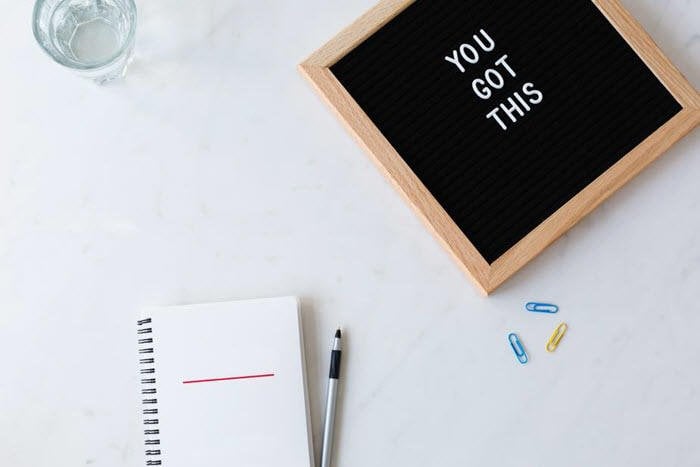
But fear not, small businesses—there is hope. Here are 22 tips for how to find the right audience and offer up content and experiences they’ll value, even with a limited budget.
>> But first, make sure your Facebook business page and other important listings are in tip-top shape with our free business listings grader.
1. Post with intent.
According to Christina Hager, head of social media strategy and distribution at media company Overflow Storytelling Lab, small businesses need to be more mindful about how they communicate with their audiences.
“You can’t just throw things onto Facebook and hope someone sees them,” she said. “You need to post with intention and then decide what you are going to do with that post”—in other words, whether you are going to boost it with budget.
To do so, Vicki Anzmann, chief creative officer at marketing agency Creativation Marketing, said to use Facebook Insights to help determine a good posting rhythm and content mix.
2. Try to blend in.
“Find ways to convey your brand by being funny, out-of-the-box, informational or unique,” said Eric Johnson, SEO specialist and digital marketer at web design, SEO and marketing firm FeedbackWrench. “Do that, and you’ll be sure to reach a large crowd on Facebook.”
Look at grocery chain Meijer.
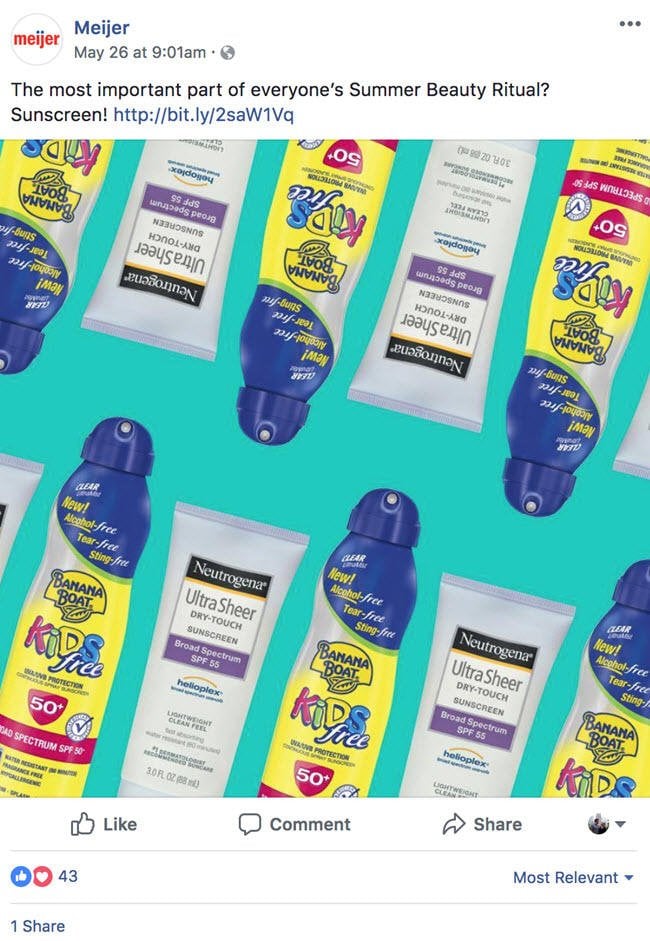
Per Johnson, this post shows below average results because both the design element and the copy strongly suggest a promotional angle.
“When coupled with a link to buy the product, Facebook’s algorithm was likely able to easily determine the overtly promotional approach that this post took on,” he said. “Due to this, the post was, overall, a failed effort.”
Meijer’s other sunscreen post, however, had more than 15 times the interaction because it exists purely for the entertainment value of reminiscing.
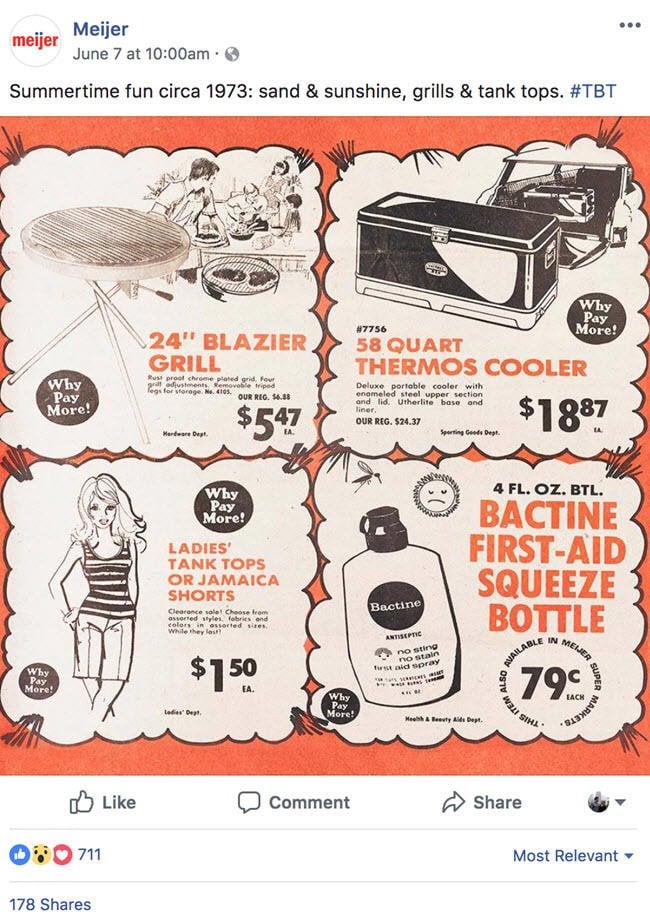
“Since there was no overtly promotional angle here, the post reached a much larger audience and garnered tons of engagements that got the Meijer brand noticed a lot more effectively than a direct sales approach,” Johnson added.
3. Don’t post without a content calendar.
In order to plan effectively, implement a content calendar.
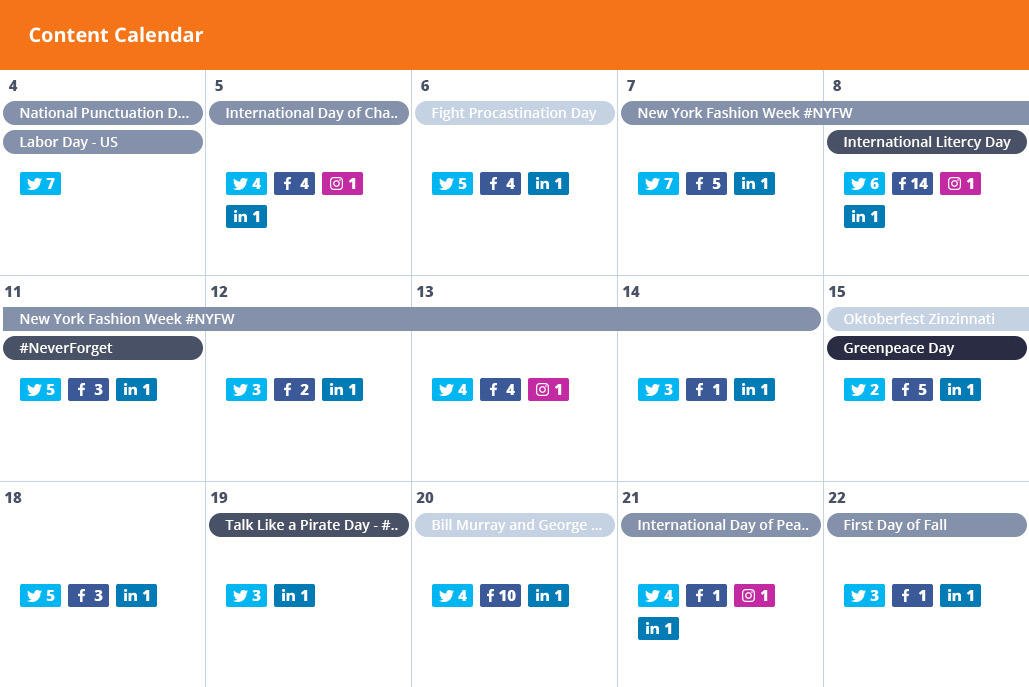
Via Falcon.io
“A content calendar is the most effective way to maximize your efforts while minimizing the time spent on Facebook marketing,” said Dan Towers, senior manager of digital marketing at marketing and advertising firm Arcane.
“You can plan out content at one time and by using a scheduling program, like Buffer or Sprout Social, you are able set it and forget it,” he added. “But don’t actually forget it—still monitor your posts and focus on community management. Your customers will appreciate it.”
4. Optimize your profile page.
Because tabs serve as the navigation bar for your Facebook business page, it is important to make sure they are well organized and improve the audience’s ability to find information. By optimizing tabs, restructuring their hierarchy and including or removing important tabs, you provide the user with a smoother experience, said Mackenzie Maher, social media account manager at digital marketing agency Power Digital Marketing.
“If you are a service-based business, make sure your review tab is turned on. If you add tabs that link to your other social pages, make sure these are all grouped together. If you’re promoting an event or hiring for a new position, make sure these tabs are also turned on and advertise your information here,” she said.
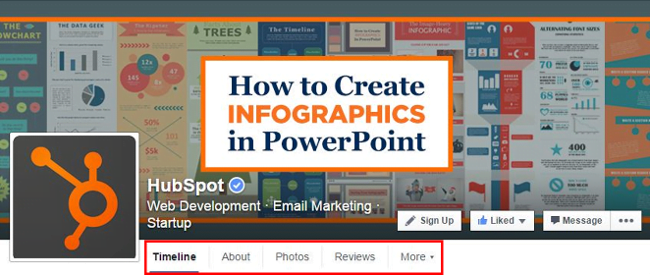
Via HubSpot
“It is simple, yet seemingly obvious tweaks like these that are often overlooked but can make or break the user’s experience. They should never have to look that hard to find the information they need.”
5. Establish a community page.
Ben Taylor, founder of freelance advice portal HomeWorkingClub.com, said community pages tend to give more organic reach than commercial business pages on Facebook.
“If you make the page invitation-only it makes customers feel special and is a good place to maintain relationships with them, one on one,” he added.
Taylor said he got the idea from the NicheHacks private mastermind group, which discusses affiliate marketing, and then set up his own advice group for HomeWorkingClub.com, which gains about 25 to 40 new members per week.
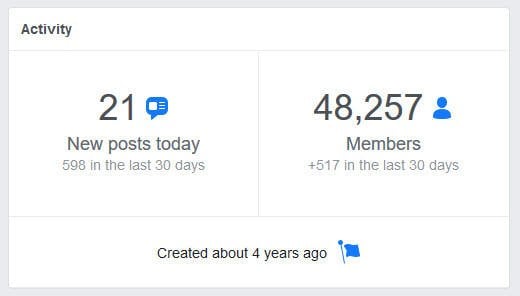
“When people sign up to my email list, they’re invited to join the group,” he said.
6. Create a Facebook group.
Maria Mora, content director at digital marketing agency Big Sea, said to create a Facebook Group, not for promotional purposes, but to allow for an exchange of information related to a given business.
“For example, if you sell essential oils, you can create a Facebook group specifically about pet owners trying aromatherapy,” she said. “The key is to find a niche within your customers’ interests and give them a space to connect. As that group grows, you can sparingly share your content, such as relevant articles or whitepapers.”
She pointed to the Ethical Aromatherapy group, which is moderated by essential oil retailer Stillpoint Aromatics, and has more than 13,000 members. Mora said it was created as a resource for consumers to discuss where essential oils are sourced and how to use them safely and it grew organically through members inviting their friends.
However, she warned not to use the group to promote sales or calls to action. The Ethical Aromatherapy page, for example, allows discussion and recommendation of other essential oil importers.
7. Be strategic about your group name.
When creating a group, marketing consultant Ron Stefanski recommended naming it after something people will actually search for in Facebook to increase the odds users will find it. He used this tactic when creating a Facebook group for his website, BengalCatClub.com, which has since gained over 10,000 followers.
“I personally think this tactic could work for any business in any area/industry—Facebook groups do really well to further the awareness of the brand,” he said. “I feel like it’s a good idea that most people aren’t using.”
8. Keep adding to your Facebook story.
According to Bernie Clark, founder of digital marketing and advertising agency Majux Marketing, Facebook Stories make posting often to Facebook much more casual.
“Stories don’t even necessarily have to pertain to company-specific news, they could be anything from fun questions to interesting links, anything to keep your audience engaged and cause a higher likelihood for a click on your profile,” he said.
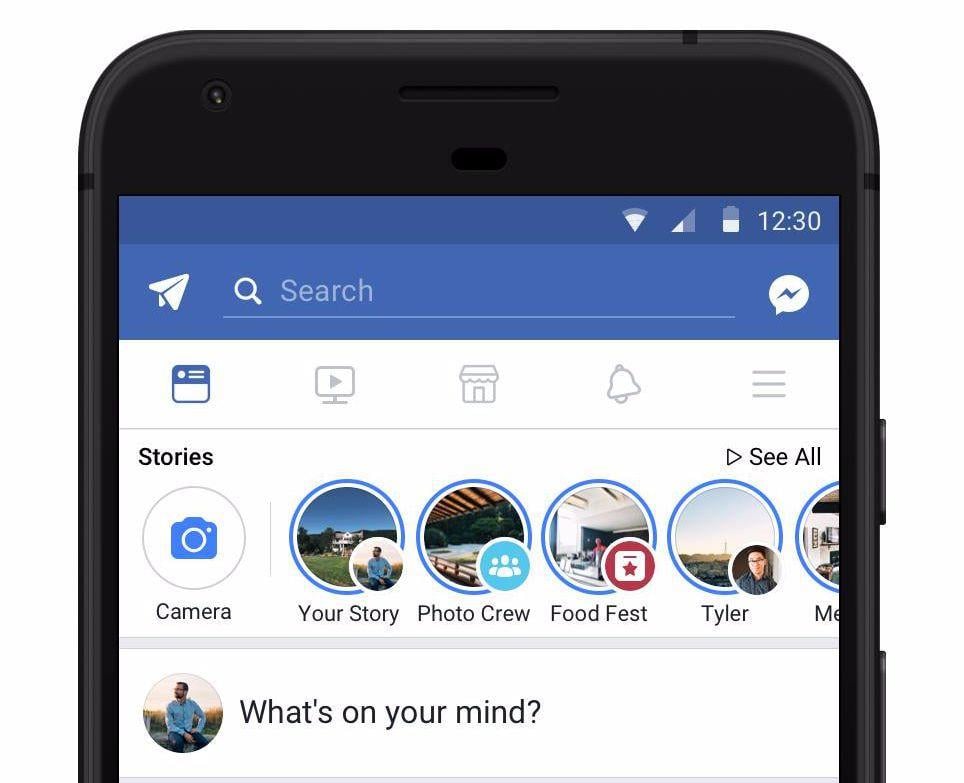
Nedelina Payaneva, digital marketing specialist at translation services firm Asian Absolute agreed, adding Facebook Stories don’t require slick production value either.
“This type of content has a casual, on-the-go feel,” she said. “Users feel like they are behind the scenes and that works. Similarly, Live feeds are increasing in popularity. From makeup tutorials to studio tours, brands can go live and interact with fans. These can be saved and shared, and have value on the replay side, too.”
9. Don’t obsess over vanity metrics.
Per Tommy Baykov, marketing manager at WordPress hosting services WPX Hosting, small businesses tend to have more limited marketing budgets, which is why they should focus on the things that make a difference to their bottom lines—and not the ones that make them temporarily feel good, like likes.
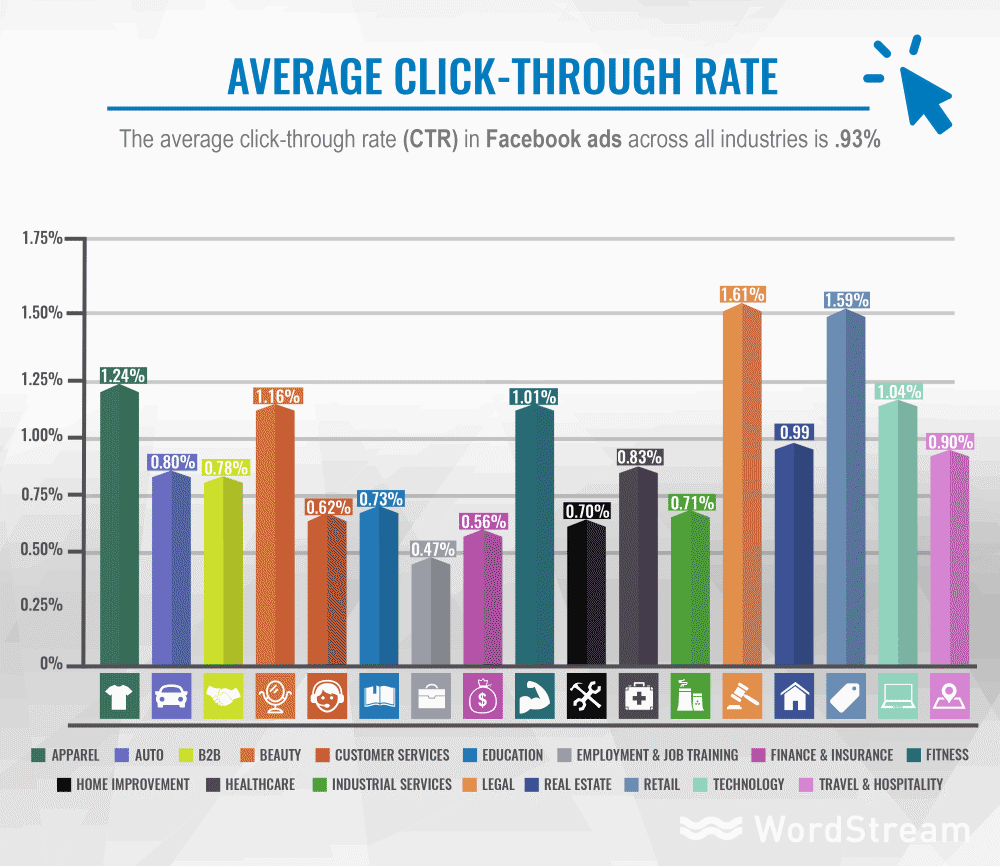
“Depending on your business and strategy, CTR, 50% video views [and] messages received are just some of the much more meaningful and actionable metrics,” he added.
10. Use Facebook for customer service.
Rafi Bitchakdjian, head of social media at marketing firm Cue Marketing, said smaller brands can lean on Facebook to help them deal with any customer service issues that arise much as corporations use bots to communicate with clients online.
“Audiences expect replies within minutes and Facebook is the ideal on-the-go platform to use when wanting to solve an issue or even just thank a customer for their positive review,” he said.
11. Post with a (small) budget.
Underwood recommends adding a paid budget—even a small one—to ensure reach.
“Try experimenting with different types of content, messaging, imagery and times of day, and use Facebook’s built-in A/B testing system to see what can help stretch your ad dollars to the max,” he said. “Posting without a paid budget is now officially a waste of time—you’re much better off posting just occasionally with a small budget to ensure that content gets in front of your valuable customers and prospects.”
Underwood said one national restaurant chain client has a per-post reach of 1.06% of its total likes on Facebook over the past several weeks—and another Midwest-based food client has seen its per-post reach drop to less than 7% in the last several weeks.
“Both of these are representative of what we’re seeing across all of our client pages recently,” he added.
Keri Lindenmuth, marketing manager at web design and software development firm KDG, agreed Facebook ads are effective because they allow you to custom-tailor the audience by location, age and more. There’s also the store traffic objective that allows local businesses to advertise on Facebook.
“Sometimes it is best if these ads look and sound no different than a regular Facebook post,” she added. “We have found that promoted video and image posts work best.”
RELATED: 62 Creative, Practical & Engaging Facebook Post Ideas
12. Narrow your audience.
George Schildge, CEO of digital marketing agency Matrix Marketing Group, said the objective is to narrow down audiences and test to see which will produce the most results for a given objective.
“Think about it as if we were running TV ads and testing in different cities,” he said.
So, for example, for small batch coffee roaster EspressoLuv.com, he narrowed down Facebook users to those who like roaster Blue Bottle Coffee. From there, he can research what else these demographics like.

“I’ll do this until I have about 30 other pages to begin narrowing my target audience before I start testing my ad creative,” Schildge added.
13. Consider boosted posts.
Per Greg Bullock, marketing manager at migraine relief company TheraSpecs, Facebook’s boost post (or sponsored post) feature allows users to expand the audience for their posts exponentially and target highly engaged and relevant prospects—with very little budget.
“Not only can it help you recoup lost organic reach from ongoing algorithmic changes, but it can increase visibility that ultimately generates traffic to your content and/or purchases for your product or service,” he said. “In fact, we have seen our most popular posts generate thousands of clicks for literally two or three pennies per click.”
And while Bullock noted there is tremendous value to setting up a larger campaign in Ads Manager, “sometimes you really only want a few clicks to get going. With boosted posts, you just set your target audience, your budget and you’re off and running.”
He pointed to this boosted post from TheraSpecs, which received nearly 1600 paid clicks at $0.02 per click.

Tommy Burns, marketing specialist at digital agency Bluehouse Group, however, warned that small businesses have to be even more careful about how they spend their budgets and boosted posts have less targeting, bidding and pricing options.
“Ultimately, that means you’re getting less bang for your buck on each advertisement placement,” he said. “Small businesses use boosted posts because they’re quick and they’re busy. Unfortunately, they are giving up control over the advertisements their audience sees.”
14. Use boosted posts to optimize ads.
For his part, Kevin Namaky, founder of marketing education company Gurulocity, suggested using Facebook ads and boosted posts in sequence.
By creating two ads and giving both a small boost of around $50 to drive initial engagement, small businesses can see which ad generates the most engagement, such as likes, shares and comments. Then, Namaky said, advertisers can create a Facebook ad in Ads Manager with their conversion goal, but instead of recreating the ad, they can reuse the exact boosted post as their creative, complete with likes and shares already on the post.
“This will help your ad convert better than if you ran a new cold piece of creative with no likes or shares on it to begin with,” he added.
To run the exact same post with the social proof, go to your business page, scroll to find the boosted post and click on the date and time at the top of the post. The URL has a unique post number, which you can copy and paste when creating the ad by clicking on ‘use existing post’ and entering the ID under Creative,” Namaky added.
15. Learn how to use Facebook’s Power Editor tool.
If you’re serious about Facebook advertising, Burns suggested learning Facebook’s Power Editor tool to promote posts.
“It allows you to set up A/B test campaigns, create custom audiences based on conversion pixels and use advanced bidding models,” he said.
16. Use Facebook’s product catalog ads.
Kevin Simonson, CEO of performance marketing agency Metric Digital, called not using Facebook’s product catalog ads a “wasted opportunity.”
“This template is a surefire way to create a rich browsing experience for shoppers, encouraging greater product discovery and engagement,” he said. “It’s also the perfect tool for implementing dynamic retargeting. Not to mention, it allows you to connect an existing catalog from another platform, such as Google.”
One ecommerce client saw sales from Facebook remarketing increase by about 300% after implementing Facebook’s product catalog.
“Their ROAS went from 600 to 3000% and their CPA dropped from $45 to $9,” he added.
17. Structure your pixel strategically.
Scott Selenow, president of marketing agency Immerse Agency, said the Facebook pixel collects data about who is visiting your website and allows you to retarget those consumers later.
Facebook also has a lookalike feature, which allows you to target people who have similar online habits as your site visitors.
“The next ad campaign you set up can be all that more successful if you are able to specifically target folks you know have a propensity to interact with your campaign,” he said. “This pixel can help you maximize that intelligent targeting.”
However, if your Facebook pixel is poorly executed, you’ll lose because you’re not getting the data you need, Simonson added.
“Smart brands do everything it takes to make conversion tracking, optimization and remarketing easier. Pixel is the perfect tool for doing so,” he said. “It’s what helps you find new customers who are similar to your website visitors. And, shockingly, many of the companies we audit don’t have it set up.”
A small business client was able to turn Facebook into a channel that drove eight figures in spend, which is more than any of its other paid channels.
“Without having their pixel in order, that never would have happened,” Simonson added.
18. Use Facebook Custom Audiences to retarget users who have watched your videos.
Per Andrew Schutt, founder of internet marketing firm Elevated Web Marketing, one of the most consistently effective strategies is using video ads to retarget warm audiences.
“One of the great things about the Facebook Ads Manager is the ability to create custom audiences for your ads based on how long people watch your videos,” he said. “For example, a dentist might run a video advertisement to a cold audience talking about how important teeth cleanings are. After the teeth cleaning video has been running for a few days, we could then set up a retargeting ad that offers a discounted teeth cleaning to new patients.”
But, Schutt said, that dentist can choose to show the ad only to people who have watched over 50% of the teeth cleaning video.
“That way, we know they’re interested in teeth cleanings already, so our ad is going to be much more relevant and effective,” he added. “Whereas if we were to just serve that discount teeth cleaning ad to a cold audience, the engagement rate on the offer would be much lower.”
Schutt said he’s used this strategy with a solar panel installation company and a chiropractor to help generate leads.
“What makes this strategy so effective is that we only show that free offer to people who watched over 75% of the first video. So we know they’re interested in the benefits of chiropractic—we’ve already prequalified them, to a degree,” he said. “In a single week, with minimal ad spend, we generated 18 leads for [a] free [chiropractic adjustment].”
19. Create saved audiences.
Unlike Custom Audiences, Saved Audiences are those you configure through the standard Facebook Ads targeting options. But instead of configuring your audience each time you create an ad or want to boost a post, you can create saved audiences that you can use each time you start an ad campaign, said Chris Smith, co-founder of digital marketing and sales coaching company Curaytor.
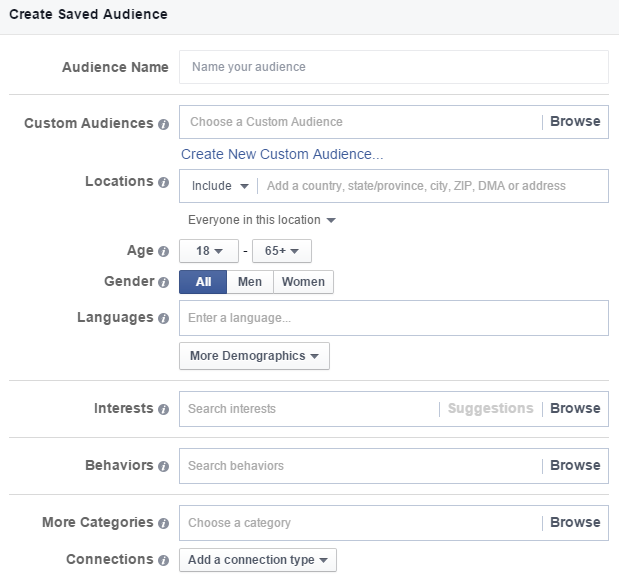
Via Udonis
“This is a great option to use if you plan on targeting similar audiences each time you create specific ads or boost posts from your page,” he said. “Especially when you start creating ads in mass quantity and boost posts regularly, it will save you a lot of time and money.”
20. Test different bidding strategies.
Stacy Caprio, founder of marketing firm Accelerated Growth Marketing, said her #1 Facebook tip is to test different bidding strategies, including amount of bid and type.
“You can create four or five different ad groups for an identical ad with different bid amounts and types, let it run for a week or two, then kill off the underperforming ad sets and let the best bid results continue to run,” she said.
In addition, Simonson said Metric Digital has audited more than 1000 small businesses since 2013 and has noticed some companies use conversion bidding, but don’t have enough events tracked to optimize.
“Facebook insists that an ad set needs to generate 15 to 25 conversions per week at minimum to provide enough data to be successful,” he said. “Now, this could be difficult to reach if your company has just started advertising and your budget is small. In our audits, we will often see conversion bidding used on ad sets that are getting far less than this number of conversions. Meaning, if your ad sets can’t hit 25 purchases per week, you can try setting your conversion event to add-to-carts, or another event closer to the top of the funnel.”
21. Don’t forget to test ad placements.
Try both the Newsfeed and right-hand-side ads to see what performs best. That’s according to Namrata Arya, head of digital marketing for domain portfolio registry Radix, who added, “The right-hand side ads, while cheaper than newsfeed ads, may not get you the desired amount of clicks or conversions.”
22. Capitalize on link retargeting.
If you’re using Facebook retargeting ads to boost conversions and attract visitors to your website, you should use link retargeting, too. That’s according to Louisa McGrath, content manager at link management tool Rebrandly, who said this allows you to build out your retargeting lists and reach audiences that haven’t visited your website before, but which have been influenced by your brand on social media.
“Basically link retargeting allows you to add Facebook retargeting pixels to your short link when sharing curated content. Anyone who clicks on this content can be retargeted with relevant ads,” she said. “So you can retarget people who’ve clicked on media coverage, reviews or industry news related to your business, even if the link led to a third-party website.”
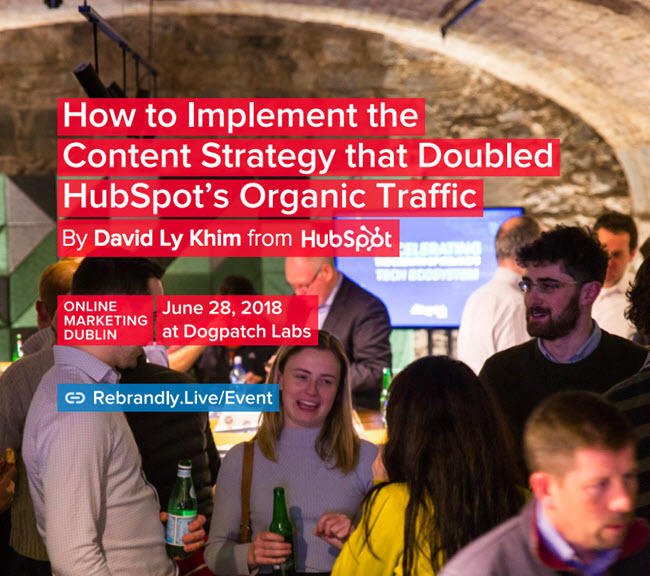
McGrath said Rebrandly is using this tactic to promote a Meetup in Dublin.
“The event page is hosted on a third-party site—Meetup.com—but because the short link includes a Facebook retargeting pixel, anyone who clicks on the link or types it into their browser is added to our Facebook retargeting list,” she said. “They’ll be presented with one of our banner ads on Facebook.”
Still not satisfied? Find even more Facebook advertising tips here.

